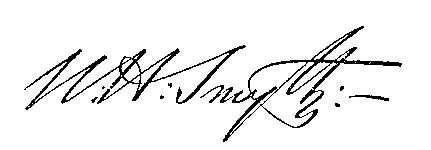ARTICLE PAGESAdmiral Smyth’s - Sidereal ChromaticsINTRODUCTION LETTER[*v.] TO JOHN LEE, ESQ.,
Q.C., LL.D.,
|
||||||||||||||||||||||||||||||||||||||||||||||||||||||||||||||||||||||||||||||||||||||||||||||||||||||||||||||||||
| TABLE 1 | |||||||||||||||||||||||||||||||||||||||
|---|---|---|---|---|---|---|---|---|---|---|---|---|---|---|---|---|---|---|---|---|---|---|---|---|---|---|---|---|---|---|---|---|---|---|---|---|---|---|---|
| Amethyst | Purple | ||||||||||||||||||||||||||||||||||||||
| Apple green | Brownish green | ||||||||||||||||||||||||||||||||||||||
| Ash colour | Pale dull grey | ||||||||||||||||||||||||||||||||||||||
| Beet hue | Crimson | ||||||||||||||||||||||||||||||||||||||
| Cinereus | Wood-ash tint | ||||||||||||||||||||||||||||||||||||||
| Cherry-colour | Pale-red | ||||||||||||||||||||||||||||||||||||||
| Cobalt | Bluish white | ||||||||||||||||||||||||||||||||||||||
| Creamy | Pale white | ||||||||||||||||||||||||||||||||||||||
| Crocus | Deep yellow | ||||||||||||||||||||||||||||||||||||||
| Damson | Dark purple | ||||||||||||||||||||||||||||||||||||||
| Emerald | Lucid green | ||||||||||||||||||||||||||||||||||||||
| Ruby colour | Pellucid red | ||||||||||||||||||||||||||||||||||||||
| Ruddy | Flesh-coloured | ||||||||||||||||||||||||||||||||||||||
| Sapphire | Blue tint [*vii.] | ||||||||||||||||||||||||||||||||||||||
| Fawn-coloured | Whitey-brown | ||||||||||||||||||||||||||||||||||||||
| Flushed | Reddened | ||||||||||||||||||||||||||||||||||||||
| Garnet | Red of various shades | ||||||||||||||||||||||||||||||||||||||
| Golden hue | Bright yellow | ||||||||||||||||||||||||||||||||||||||
| Grape red | A variety of purple | ||||||||||||||||||||||||||||||||||||||
| Jacinth | Pellucid orange tint | ||||||||||||||||||||||||||||||||||||||
| Lemon-coloured | Bright but pale yellow | ||||||||||||||||||||||||||||||||||||||
| Lilac | Light purple | ||||||||||||||||||||||||||||||||||||||
| Livid | Lead colour | ||||||||||||||||||||||||||||||||||||||
| Melon tint | Greenish yellow | ||||||||||||||||||||||||||||||||||||||
| Orpiment | Bright yellow | ||||||||||||||||||||||||||||||||||||||
| Pale | Deficient of hue | ||||||||||||||||||||||||||||||||||||||
| Pearl colour | Shining white | ||||||||||||||||||||||||||||||||||||||
| Plum colour | Pale purple | ||||||||||||||||||||||||||||||||||||||
| Radish tint | Dull purple | ||||||||||||||||||||||||||||||||||||||
| Rose tint | Flushed crimson | ||||||||||||||||||||||||||||||||||||||
| Ruby colour | Pellucid red | ||||||||||||||||||||||||||||||||||||||
| Sardonyx | Reddish yellow | ||||||||||||||||||||||||||||||||||||||
| Sea green | Faint cold green | ||||||||||||||||||||||||||||||||||||||
| Silvery | Mild white lustre | ||||||||||||||||||||||||||||||||||||||
| Smalt | Fine deep blue | ||||||||||||||||||||||||||||||||||||||
| Topaz | Lucid yellow | ||||||||||||||||||||||||||||||||||||||
| Vanilla tint | Dark brown or chocolate | ||||||||||||||||||||||||||||||||||||||
From various auspicious circumstances, the present appears to be a very seasonable time for bringing this interesting natural feature before our volunteer astronomers; and, as you so liberally undertook to furnish them with my hints on the subject, the recommendation before us is launched; while to it is appended a chromatic diagram, as a first step towards simplifying the records hereafter to be obtained.
This pamphlet merely touches upon the common order of colours and their complementaries — without entering into the relation of the light absorbed to the light reflected — and by no means pretends to treat of the almost infinite shades and tints which philosophers and artists distinguish in nature. The recent discovery or a mono-chromatic light occasioned by the [*viii.] combustion of the new and curious metal Thallium, establishes the Newtonian theory of the spectrum, as being more correct than the ostensible dogma of only three primary colours, which had nearly supplanted it of late; while the mysterious lines within the arch of seven primitively refracted rays, open out a wonderful scope in the development of planetary and sidereal physics. Indeed the rigorous spectrum analysis now in hand, as applied to the stars – albeit of operose difficulty — is rich in promise; and already do the observations of Kirchoff, Donati, and Rutherford., with the masterly experiments of Miller and Huggins, indicate that a cause for the difference of colour may thus be sought in the various constitutions of the investing stellar atmospheres.
But, even were those beautiful inquiries more matured and correlative than they are as yet, the call now made to the efficiently armed amateur would not be the less necessary, seeing what a series of well observed and accurately described facts may be reaped by diligent appliance.
You must well remember the attempt that we made in July 1829, hereafter recounted, to come to a conclusion regarding the colours of the double-star familiarly designated Cor Caroli; and how eleven pairs of eyes, of which six couple were directed by ladies, widely differed in their mental appreciation of the hues before them. Yet in the autumn of 1855, myself and two other observers were unanimous in pronouncing that the same object was −
A. Pale reddish white. & B. Lilac ; the which might have been more satisfactorily and [*ix.] more exactly expressed according to the diagram herein proposed, in this form:- A. Red 4, B. Purple 3.
At this last epoch, by direct experiment on the mild tints of Cor Caroli and the stronger ones of Rasalgett, I was satisfied that, however telescopes may vary as to the intensity of the hue imparted, according to the accuracy of their chromatic correction, and even under different powers by the same instrument, yet the general tone is in fair accordance. It follows then, that the adoption of the proposed line of action, till a better one is presented, will assuredly be productive of many desirable results; and therefore, hoping for a realization of the wish, I am always
Yours very truly,

W.H.Smyth
Last Update : 26th April 2017
Southern Astronomical Delights © (2012-17)















